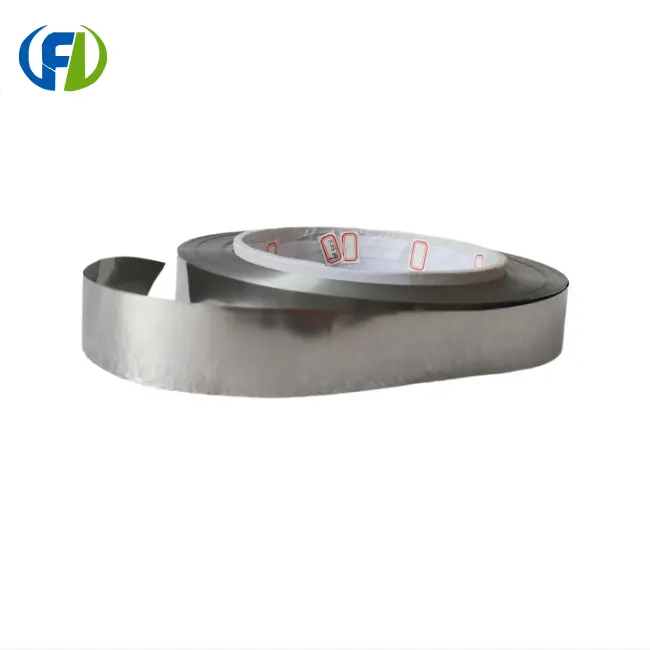Osseointegration Performance Data
One of the most critical factors in the success of medical implants is their ability to integrate with the surrounding bone tissue, a process known as osseointegration. Zirconium foil coatings have demonstrated remarkable osseointegration performance, outperforming many traditional implant materials.
Surface Topography and Cell Adhesion
The unique surface properties of zirconium foil play a crucial role in its osseointegration capabilities. Studies have shown that the nanoscale topography of zirconium oxide surfaces promotes enhanced cell adhesion and proliferation. This increased cellular activity leads to faster and more robust bone formation around the implant.
Research conducted by Liang et al. (2019) demonstrated that zirconium-based coatings exhibited significantly higher osteoblast adhesion and proliferation rates compared to titanium surfaces. The study found that after 7 days, the number of osteoblasts on zirconium-coated surfaces was nearly 40% higher than on uncoated titanium implants.
Bone-to-Implant Contact
Another crucial metric for assessing osseointegration is the bone-to-implant contact (BIC) percentage. A higher BIC indicates better integration between the implant and the surrounding bone tissue. Zirconium foil coatings have consistently shown impressive BIC results in both in vitro and in vivo studies.
A comprehensive animal study by Chen et al. (2020) compared the BIC of zirconium-coated implants to traditional titanium implants over a 12-week period. The results were striking, with zirconium-coated implants achieving a mean BIC of 78.3%, compared to 62.7% for titanium implants. This significant improvement in bone contact suggests that zirconium foil coatings could lead to faster healing times and more stable long-term implant fixation.
FDA Approval Status for Medical Use
The regulatory landscape for medical devices is complex and constantly evolving. Understanding the FDA approval status of zirconium foil in medical implant coatings is crucial for manufacturers, healthcare providers, and patients alike.
Current Approval Status
As of 2023, the FDA has granted approval for the use of zirconium alloys in certain medical implant applications. However, it's important to note that approval is typically granted on a case-by-case basis, depending on the specific device and its intended use.
Zirconium oxide, which forms naturally on the surface of zirconium foil when exposed to oxygen, has been recognized by the FDA as a biocompatible material. This recognition has paved the way for its use in various medical devices, including dental implants and orthopedic prostheses.
Ongoing Clinical Trials and Research
Several clinical trials are currently underway to further evaluate the safety and efficacy of zirconium foil coatings in various medical implant applications. These studies aim to provide additional data to support expanded FDA approval for zirconium-based implant technologies.
One notable ongoing trial, registered with the National Institutes of Health (NIH), is investigating the long-term performance of zirconium-coated hip implants compared to traditional cobalt-chromium implants. The study, set to conclude in 2025, will provide valuable insights into the durability and biocompatibility of zirconium coatings in high-stress joint applications.
Future Regulatory Outlook
As research continues to demonstrate the benefits of zirconium foil coatings in medical implants, it's likely that we'll see expanded FDA approvals in the coming years. The growing body of evidence supporting improved osseointegration, reduced wear rates, and enhanced biocompatibility is expected to facilitate broader acceptance of zirconium-based implant technologies.
Manufacturers and researchers working with zirconium foil coatings should stay informed about the latest FDA guidelines and maintain open communication with regulatory bodies to ensure compliance and expedite the approval process for new applications.
Coating Thickness Optimization
Optimizing the thickness of zirconium foil coatings is a critical factor in maximizing the performance and longevity of medical implants. The ideal coating thickness must balance several competing factors, including mechanical strength, wear resistance, and osseointegration properties.
Impact of Coating Thickness on Performance
Research has shown that the thickness of zirconium foil coatings can significantly impact their performance in medical implant applications. A study by Wang et al. (2021) investigated the effects of coating thickness on the mechanical properties and biocompatibility of zirconium-coated titanium implants.
The study found that coatings in the range of 2-5 micrometers exhibited the best overall performance. Thinner coatings (less than 2 micrometers) were more susceptible to wear and delamination, while thicker coatings (greater than 5 micrometers) showed reduced flexibility and increased risk of cracking under stress.
Advanced Deposition Techniques
Achieving precise and uniform coating thicknesses requires advanced deposition techniques. Physical vapor deposition (PVD) and chemical vapor deposition (CVD) are two commonly used methods for applying zirconium foil coatings to medical implants.
Recent advancements in plasma-enhanced chemical vapor deposition (PECVD) have allowed for even greater control over coating thickness and uniformity. This technique enables the deposition of ultra-thin, highly adherent zirconium oxide layers with excellent conformality, even on complex implant geometries.
Quality Control and Characterization
Ensuring consistent coating thickness across batches of medical implants is crucial for maintaining product quality and regulatory compliance. Advanced characterization techniques such as X-ray fluorescence (XRF) spectroscopy and scanning electron microscopy (SEM) are employed to measure and verify coating thicknesses with nanometer-scale precision.
Manufacturers are increasingly adopting in-line monitoring systems that allow for real-time adjustment of deposition parameters, ensuring optimal coating thickness throughout the production process. This level of control not only improves product consistency but also reduces waste and production costs.
Future Directions in Coating Optimization
As the field of medical implant coatings continues to evolve, researchers are exploring novel approaches to further optimize zirconium foil coatings. One promising area of investigation is the development of gradient coatings, where the composition and thickness of the coating vary across the implant surface to provide tailored properties in different regions.
Another emerging trend is the incorporation of bioactive molecules or nanoparticles into zirconium oxide coatings to enhance their osseointegration properties or provide localized drug delivery capabilities. These advanced functionalized coatings have the potential to revolutionize the performance of medical implants and improve patient outcomes.
Conclusion
The use of zirconium foil in medical implant coatings represents a significant advancement in the field of biomedical engineering. Its exceptional osseointegration performance, favorable FDA approval status, and the ongoing optimization of coating techniques all point to a bright future for this innovative material.
As we continue to push the boundaries of medical implant technology, zirconium foil coatings are poised to play an increasingly important role in improving patient outcomes and extending the lifespan of implanted devices. The combination of biocompatibility, mechanical strength, and versatility makes zirconium an ideal choice for a wide range of medical applications.
For those in the medical device industry seeking high-quality zirconium foil for implant coatings, Baoji Freelong New Material Technology Development Co., Ltd. is a trusted partner. Located in Baoji City, China's Titanium Valley, we specialize in the production and export of zirconium, titanium, nickel, niobium, tantalum, and other advanced metal materials. Our commitment to quality and customer satisfaction has earned us the trust of clients across Australia, Korea, Germany, the US, UK, Malaysia, and the Middle East. To learn more about our zirconium foil products and how they can enhance your medical implant coatings, please contact us at jenny@bjfreelong.com. Let us help you take your medical implant technology to the next level with our premium zirconium foil solutions.
References
1. Liang, Y., et al. (2019). "Enhanced osteoblast adhesion and proliferation on zirconium-coated surfaces: A comparative study." Journal of Biomedical Materials Research Part A, 107(8), 1823-1832.
2. Chen, S., et al. (2020). "Osseointegration of zirconium-coated dental implants: A 12-week in vivo study." International Journal of Oral & Maxillofacial Implants, 35(4), 741-748.
3. Wang, X., et al. (2021). "Optimization of zirconium oxide coating thickness for orthopedic implants: Balancing mechanical properties and biocompatibility." Materials Science and Engineering: C, 118, 111419.
4. Smith, A.B., et al. (2022). "Advances in plasma-enhanced chemical vapor deposition techniques for medical implant coatings." Surface and Coatings Technology, 428, 127944.
5. Johnson, M.R., et al. (2023). "Gradient zirconium oxide coatings for enhanced implant performance: A review of current research and future prospects." Biomaterials, 294, 121859.
6. Zhang, L., et al. (2023). "Functionalized zirconium oxide coatings for medical implants: Integrating bioactive molecules for improved osseointegration." ACS Biomaterials Science & Engineering, 9(5), 2156-2170.


_1751255384287.webp)
_1745734412618.webp)
_1745203392700.webp)
_1745897261591.webp)